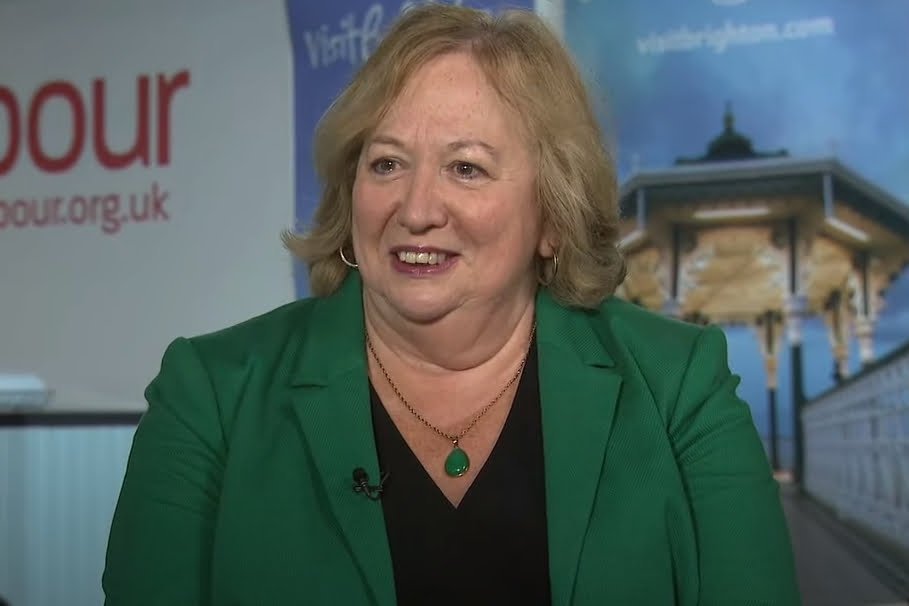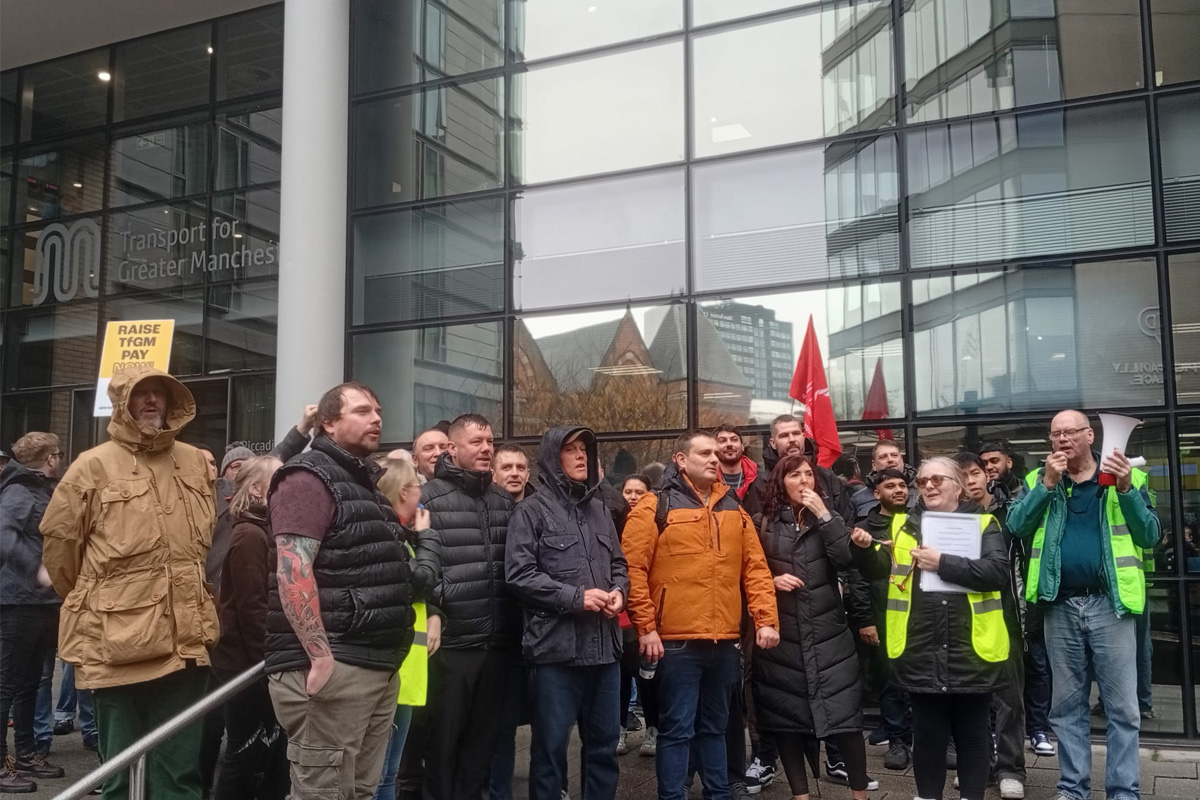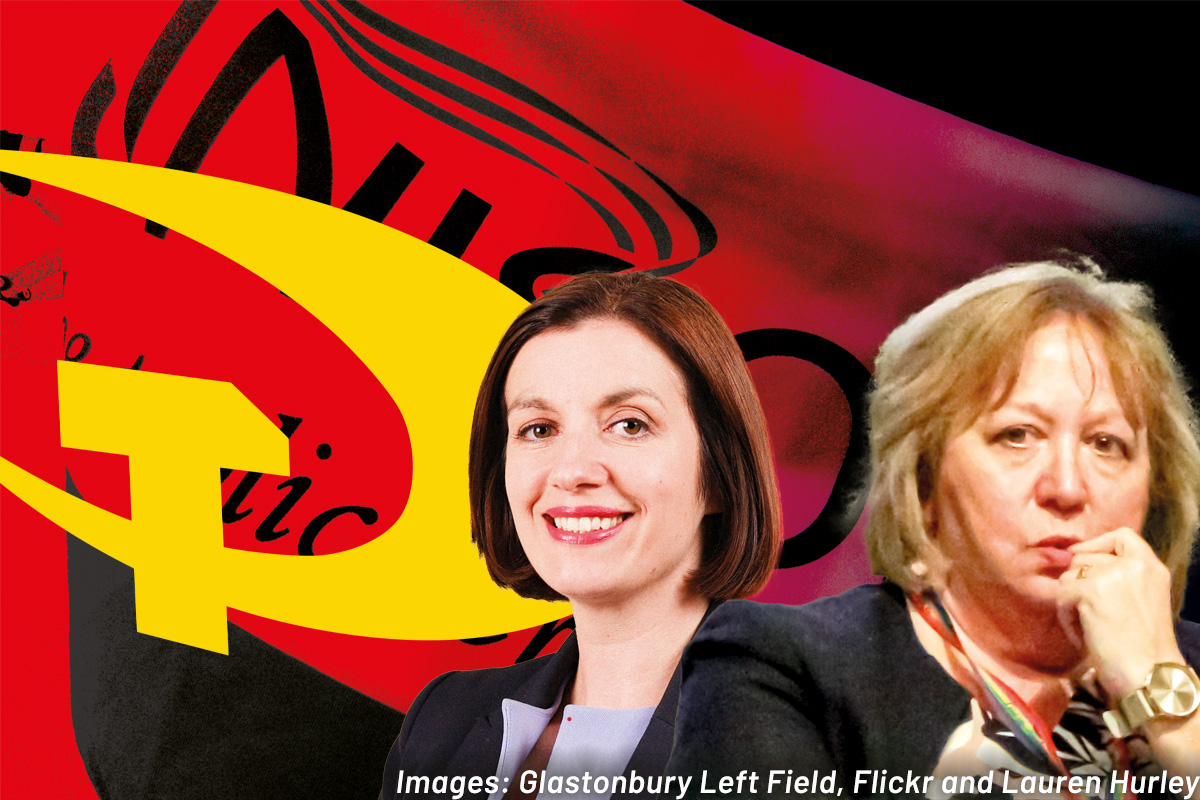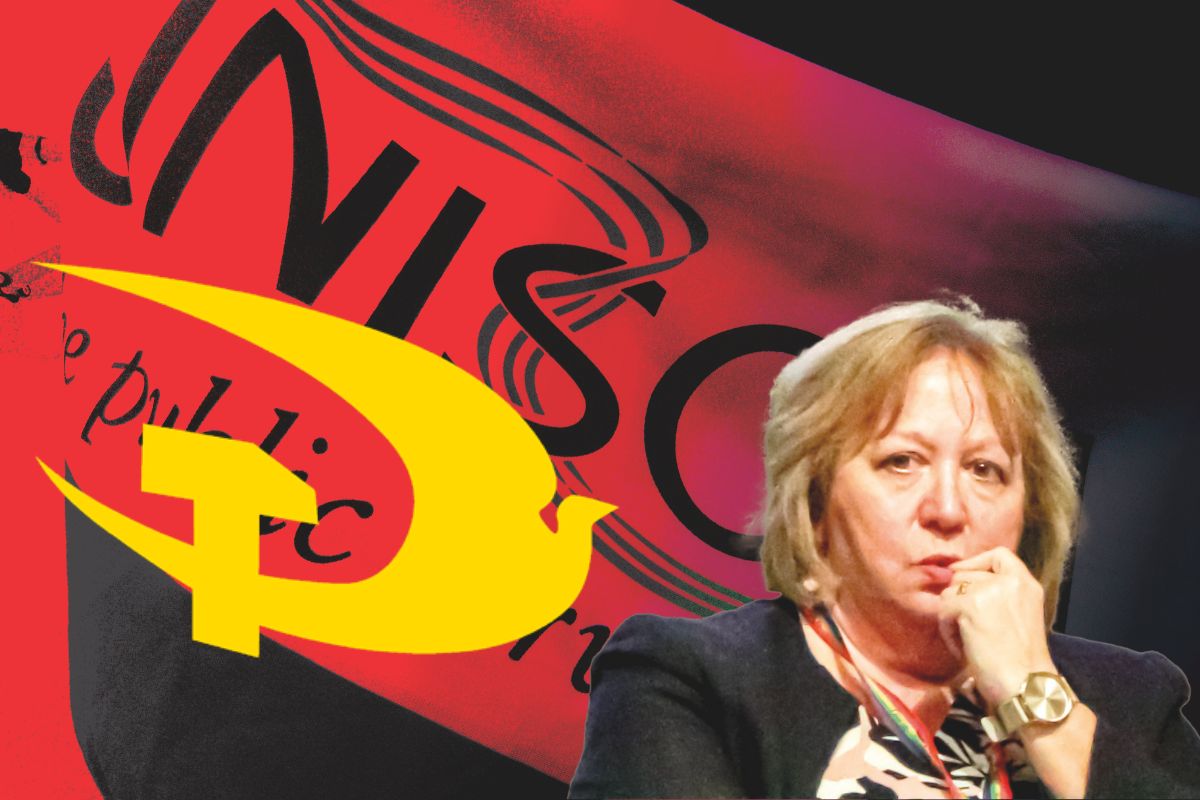Across the country, public sector workers are under siege.
Inflation eats away at stagnant wages. Derisory pay “rises” amount to real-terms cuts. Austerity – now administered by Starmer’s Labour – has decimated frontline services. NHS staff are pushed to breaking point; social care workers labour under impossible workloads; and local councils teeter on the edge of bankruptcy.
This is the reality for over a million Unison members. But instead of leading a mass fightback, the union’s leadership is mired in the factional warfare of the upcoming NEC elections.
Surges in purges
At a time when the full strength of the membership must be brought to bear against the attacks raining down from Westminster, the right-wing bureaucracy is more focused on preserving its grip on power – and, crucially, shielding Labour from criticism – than defending the interests of its members.
“When workers do well, the economy thrives. We can all win.”
UNISON general secretary @cmcanea responds to the Labour government’s Employment Rights Bill, introducing long-awaited new rights for working people. pic.twitter.com/lxc8S6NnS4
— UNISON – UK’s largest union (@unisontheunion) October 11, 2024
The recent removal by the right of left-wing president Steve North is a disgraceful, undemocratic and politically motivated attack. It’s a clear sign of the lengths to which the bureaucracy will go to silence anyone who challenges their well-travelled gravy train, and to crush any influence of the left.
🚨Reinstate Steve North!✊
🙋♀️ Pass the emergency model motion in your branch https://t.co/fPT5ZduqlZ
🧵2/2 pic.twitter.com/GPPEHpGNJH
— #TimeForRealChange (@tfrc_unison) May 15, 2025
While public sector workers demand action, the right of the union focuses on purges. These reflect Starmer’s purges of left-wingers in the Labour Party since Corbyn’s suspension in 2020, and the disgraceful suspension of Unison’s president Paul Holmes in 2022.
The lessons for the left in the union remain today as they were then. Across the board, the right wing of the labour movement will stop at nothing to bludgeon any working-class fightback before it has even begun.
Faction fight or class struggle?
We stand in full solidarity with Steve North and call for his immediate reinstatement. We urge our readers to support the left, grouped around Time for Real Change. But we do this with a word of caution to union activists: do not get drawn into an endless bureaucratic turf war!
Ultimately, if you attempt to take on a right-wing bureaucracy within the confines of a bureaucratic machine, you will end up with a bureaucracy. The whole machine is designed to keep the ordinary members alienated from their careerist, privilege-driven leaders.
The rules, the processes, the structures – they are all designed to neutralise the left.
The future of Unison will therefore not be decided in committee rooms, but in the workplaces, hospitals, schools, and council offices.
Now is the time to mobilise. Real change will not come through appeals to process but through a fighting programme that galvanises the rank and file.
We need a leadership prepared to break with Starmer’s Labour government and with union bureaucratism – a leadership that turns Unison into a weapon in the hands of workers, not a shield for their enemies.
“No money? No work!” On the brink of a wildcat strike
IB, Cambridge ARU
Working in special education is never easy. But minuscule budgets and inflation have made a hard job near impossible.
Conditions imposed on support staff in schools are pushing workers to the brink of collapse.
As a SEND (special educational needs and disabilities) teaching assistant, the only thing my work has to offer me – after broken promises for wellbeing support, more time for planning, and better staff training – is my meagre end-of-the-month paycheck.
Recently, however, our pay did not arrive on time. Teachers arrived instead to an email forwarded by management: there had been a ‘glitch’ with the payments, which they would update us on.
Having woken up without pay, some of my co-workers were not able to put money into their electricity meter or pay for their children’s school lunch. The mood immediately shifted from panic to anger.
As a workforce, we’d had enough. Job losses; no heating; a hole in the ceiling of our main building. Even our management admits that we do the work of three people!
No pay was the final straw. By breaktime that day, TAs were in agreement that if we weren’t paid by the end of work, we wouldn’t come in tomorrow.
The year of stress induced by low pay, lack of staff, and miserable conditions, meant we knew our incompetent bosses couldn’t be ‘reasoned with’.
When our pay did come through, the feeling was of relief that we could pay bills, alongside anger and a desire to fight back against these disgusting conditions.
Our anger may temporarily settle. But with capitalism in terminal decline, situations like this will keep arising. And we need to be ready to fight.
Shaky foundations: What young architects are REALLY paid
An architect in training
A recent Royal Institute of British Architects study has shown that most architectural professionals between the ages of 18-24 are being cynically underpaid.
76 percent of Part 1 workers (architecture degree graduates) and 13 percent of Part 2 workers (master’s degree graduates) do not have a living wage in practice, with the average employee working 6.5 hours of overtime, usually unpaid, a week.
The response from RIBA is that they will…update their Code of Practice. Inspiring stuff!
Ultimately, guidelines and moralising about workload will not solve this problem.
Long hours; hard work; a high-pressure and unhealthy environment, rife with unreasonable expectations; sexism, racism, and bullying of workers and students: all this is spread across employment and study at universities.
Most architectural students also venture to London for work, where most UK practices are located. This only exacerbates the unaffordability of living, especially in this protracted capitalist crisis.
But clearly little is gained from this suffering. Not only are you treated like dirt, but there is no creative freedom. All projects are limited by cost engineers, low budgets, and the capitalist clients’ whims.
Clearly, we deserve better than this. And workers in general deserve better than the shoddy results these practices produce.
The only way to make architecture an art, and life a liveable one, is through socialist revolution.
We need to rid ourselves of class society, and free ourselves from this never-ending labour, to be able to truly build structures worthy of the workers they’d serve.
Anger ratchets up in Cambridge
Arsalan (Unite the Union, personal capacity)
The mood among members of our Unite Cambridge branch is one of growing anger. As workers in Britain’s most expensive city, we’re witnessing firsthand how the cost-of-living crisis is devastating staff.
As one member put it:
“As a technician at the university for many years, I’ve watched our city become increasingly unaffordable. My salary simply hasn’t kept pace with the soaring cost of living. Three years ago, I was forced to move from Cambridge to Peterborough, adding a three-hour daily commute to my working day.”
Despite inflation hovering around 3.5 percent (RPI), the insulting 1.4 percent pay offer for 2025/26 from UCEA (the university bosses’ union) exemplifies how employers consistently undervalue our labour.
Last year, Unite members were forced into strike action to secure even a modest increase, which still fell below inflation. Such persistent real-terms pay cuts have eroded living standards for years, pushing workers to breaking point.
Cambridge may have the country’s highest living costs, but it also has workers who are increasingly prepared to fight back.
The influx of new young members into my branch is a sign of things to come, as the government’s inability to resolve the crisis prepares a new phase of industrial struggle.






